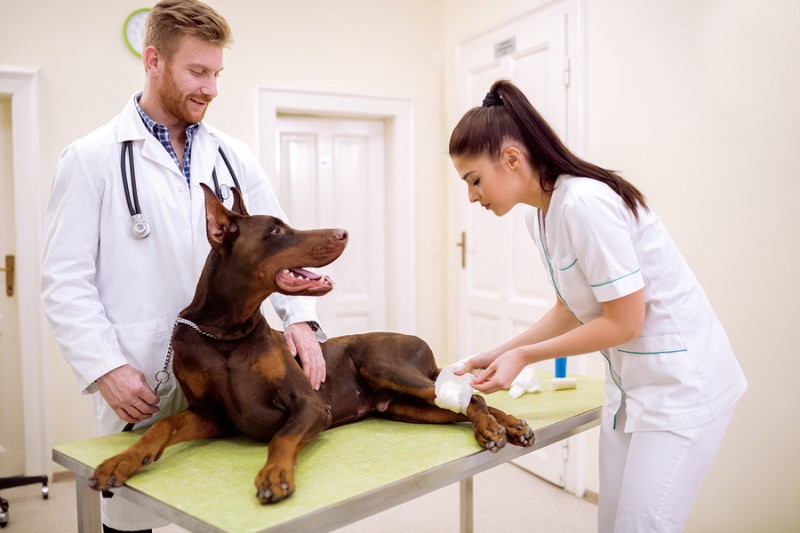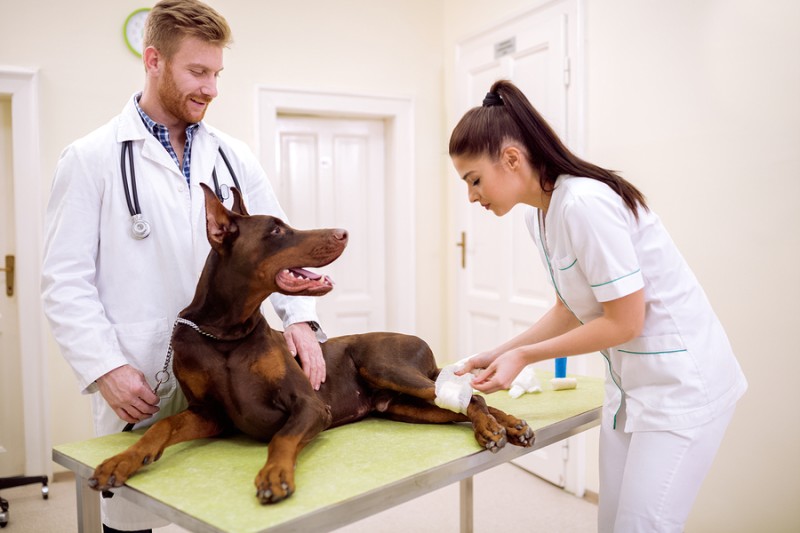Most common knee problems


Although they are much less visible than ours, dogs also have knees. And like us, they also experience pain and suffer injuries to them frequently. In case you’re not familiar, let’s talk about the most common knee problems.
The most common knee problems
The causes for knee problems can be several. For example, an injury or a condition of these. The difficulty in identifying them is that when walking on all fours, suffering from lameness in one of them does not prevent you from continuing to advance.
It is for this reason that we must regularly pay attention to our dog. Detecting pathologies quickly will help us to treat them and prevent the damage from going further, producing irreparable injuries.
The knee problems that most commonly appear in dogs are ruptures of the cruciate ligaments and dislocation in the patella. In small breeds the latter usually occurs, while ligament injuries appear more in large ones, especially if they are overweight.
Other knee problems that may also appear are injuries to the meniscus or tears in the ligament. These can be found in dogs of any size, since they are often due to blows or sudden movements. The knee joint is quite unstable compared to other parts of the body.
Symptoms of knee problems
Each dog may show a different symptomatology, but broadly speaking, the most common are those detailed below:
-
Advances with the leg raised and is not able to support it and carry weight
-
Limp with the leg that is affected
-
Sudden onset of pain while playing or exercising
-
Swelling in the knee
If we observe that our dog seems to have knee problems, it is advisable to go to the veterinarian to make a complete diagnosis.
How to Treat Knee Problems
Depending on the knee problems suffered, the treatment will vary. If the lesion consists of a displacement of the kneecap, it can be placed in place by pushing it. However, it is the veterinarian who must do it. If it is a severe dislocation, surgery may be needed.
Knee problems from tears or tears in the ligaments usually involve surgery in most cases. Depending on the severity and age of the dog, rest may suffice. Since these are painful injuries, analgesics will have to be given to calm the pain and inflammation.
If there has been immobility or surgery, rehabilitation will also be necessary for the progressive recovery of muscle strength and mobility. We may also need some special bandage.
In Ortocanis we have a wide range of products aimed at the welfare of animals and their recovery from injuries or pathologies.
Recent Posts
What side effects do anti-inflammatories have in dogs?
Anti-inflammatory drugs, called NSAIDs (nonsteroidal anti-inflammatory drugs), are the most commonly prescribed pain reliever in…
Exercises to strengthen the dog’s hind legs
Improving the muscles of the hind limbs in dogs is an interesting option both in…
What to do with a dog that has back problems
Dogs can have health problems related to their limbs. But they can also have back…
Total or partial rupture of cruciate ligament in dogs
One of the most frequent injuries that dogs usually suffer is the rupture of one…
Solutions to hip dysplasia in dogs
Hip dysplasia in dogs is one of their most common inherited bone diseases. It is…
How to treat patellar luxation in dogs?
There is talk of patellar dislocation in dogs, when the patella, a small bone located…
